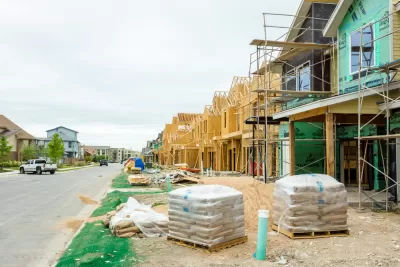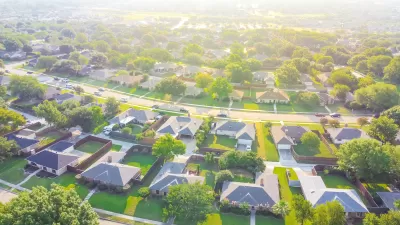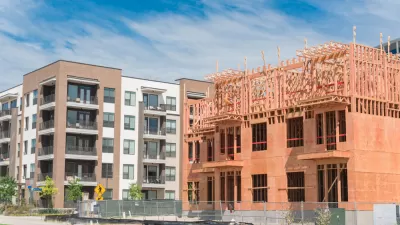The high cost of housing in the United States can be attributed in part to the high costs, regulatory and otherwise, of building new housing.

“The main factor driving the cost of all housing is the cost of building new housing,” writes Michael Andersen, arguing that “If we want our cities’ older homes to cost less, either to buy or rent, we need it to be less expensive to create a new home.” As Andersen explains, “in the end, pricing mostly comes down to cost. The price of existing homes is held down (or driven up), more than anything else, by the cost factors of creating new housing.”
If all of us deserve a home, and I happen to agree with the 1948 United Nations General Assembly that we all do, there’s no alternative to taxing and spending. And if we also want to avoid housing shortages like today’s, there’s also no alternative to making homes cost less to build.
According to Andersen, part of the problem stems from unnecessary legal requirements. Some mandatory items, like windows, indoor plumbing, and safe electrical cables, are “well worth their costs.” But “when our governments require homes to be a certain level of ‘nice’ to be allowed to exist, they’re making assumptions that don’t apply to everyone.” Loosening some of these requirements could reduce the cost of building new homes and, thus, the cost of housing. The source article links to Andersen’s more detailed proposals in Willamette Week and his discussion of the issue on the Week’s podcast.
FULL STORY: The Price of Old Homes Depends on the Cost of Building New Homes

Alabama: Trump Terminates Settlements for Black Communities Harmed By Raw Sewage
Trump deemed the landmark civil rights agreement “illegal DEI and environmental justice policy.”

Planetizen Federal Action Tracker
A weekly monitor of how Trump’s orders and actions are impacting planners and planning in America.

The 120 Year Old Tiny Home Villages That Sheltered San Francisco’s Earthquake Refugees
More than a century ago, San Francisco mobilized to house thousands of residents displaced by the 1906 earthquake. Could their strategy offer a model for the present?

LA’s Tree Emergency Goes Beyond Vandalism
After a vandal destroyed dozens of downtown LA trees, Mayor Karen Bass vowed to replace them. Days later, she slashed the city’s tree budget.

Sacramento Leads Nation With Bus-Mounted Bike Lane Enforcement Cameras
The city is the first to use its bus-mounted traffic enforcement system to cite drivers who park or drive in bike lanes.

Seattle Voters Approve Social Housing Referendum
Voters approved a corporate tax to fund the city’s housing authority despite an opposition campaign funded by Amazon and Microsoft.
Urban Design for Planners 1: Software Tools
This six-course series explores essential urban design concepts using open source software and equips planners with the tools they need to participate fully in the urban design process.
Planning for Universal Design
Learn the tools for implementing Universal Design in planning regulations.
Ada County Highway District
Clanton & Associates, Inc.
Jessamine County Fiscal Court
Institute for Housing and Urban Development Studies (IHS)
City of Grandview
Harvard GSD Executive Education
Toledo-Lucas County Plan Commissions
Salt Lake City
NYU Wagner Graduate School of Public Service





























